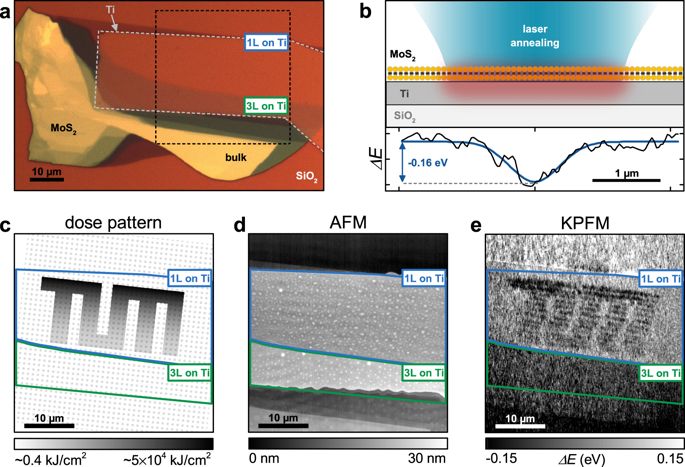npj 2D Materials and Applications ( IF 9.1 ) Pub Date : 2017-11-17 , DOI: 10.1038/s41699-017-0042-2 Eric Parzinger , Martin Hetzl , Ursula Wurstbauer , Alexander W. Holleitner

|
Two-dimensional (2D) layered transition metal dichalcogenides (TMDs) have emerged as promising materials for electronic, optoelectronic, and valleytronic applications. Recent work suggests drastic changes of the band gap and exciton binding energies of photo-excited TMDs with ultrafast non-radiative relaxation processes effectively heating the crystal lattice. Such phenomena have not been considered in the context of optoelectronic devices yet. We resolve corresponding ultrafast photoconductance dynamics within monolayer MoS2. The data suggest that a bolometric contribution as well as a defect-related conductance dominate the overall photoconductance. We further reveal that a focused laser illumination, as is used in many standard optoelectronic measurements of MoS2, can modify and anneal the morphology of metal contacts. We show that a junction evolves with lateral built-in electric fields, although Raman spectra and photoluminescence spectra indicate no significant changes, such as a crystal phase transition. We highlight how such optimized devices can drive ultrafast electromagnetic signals in on-chip high-frequency and THz circuits.
中文翻译:

单层MoS 2中的接触形态和重现的光电流动力学
二维(2D)层状过渡金属二硫化碳(TMD)已经成为电子,光电和Valleytronic应用的有前途的材料。最近的工作表明光激发的TMD的带隙和激子结合能的急剧变化具有超快的非辐射弛豫过程,可以有效地加热晶格。尚未在光电设备的上下文中考虑这种现象。我们解决了单层MoS 2中相应的超快光电导动力学问题。数据表明,辐射热贡献以及与缺陷相关的电导主导了整个光电导。我们进一步揭示了聚焦激光照明,正如MoS 2的许多标准光电测量中所使用的那样,可以修改和退火金属触点的形态。我们显示,尽管拉曼光谱和光致发光光谱表明没有明显的变化(例如晶体相变),但随着侧向内置电场的发展,结发生了变化。我们重点介绍了这种优化的器件如何在片上高频和太赫兹电路中驱动超快电磁信号。











































 京公网安备 11010802027423号
京公网安备 11010802027423号